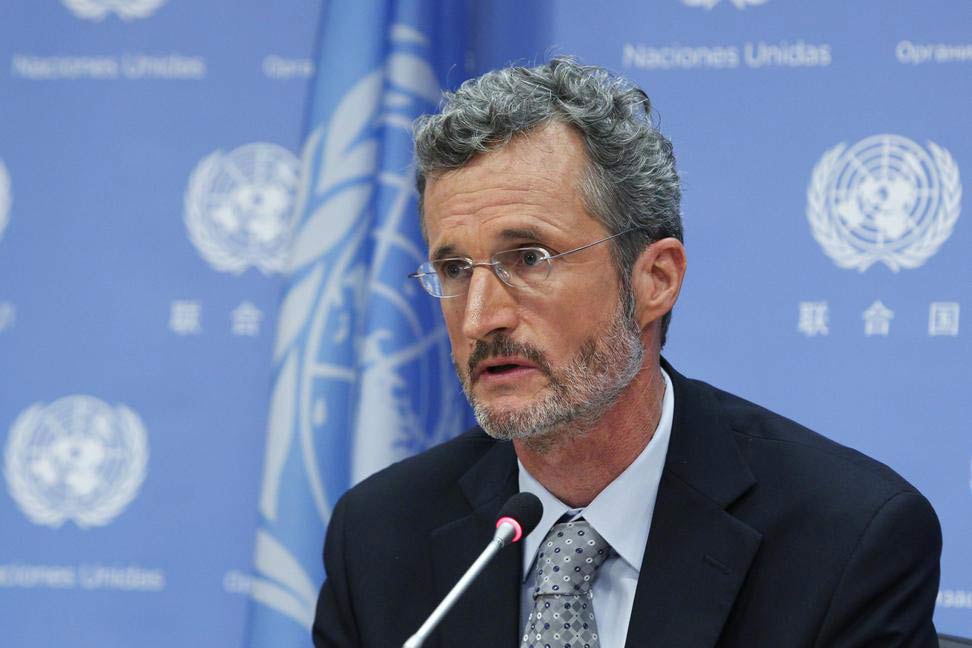This post originally appeared in Mr. Ban’s profile on LinkedIn.
09 May, 2014 – Climate change is already happening — that is the message from the newly released US Climate Assessment report. This report come close on the heels of the reports of the Intergovernmental Panel on Climate Change (IPCC) — the international body for assessing the science related to climate – that confirmed that climate change is happening and is having consequences in every continent.
That’s the bad news — that global greenhouse gas emissions are continuing to rise at an accelerated pace, and will continue to rise if we take no action. And right now we are not doing enough to slow emissions and we are not ready to deal with the impacts of climate change.
But the Panel made another striking conclusion. Options for limiting climate change are still available if we take urgent action on a grand scale, and take it now. Importantly, the report also stressed that acting now will cost far less than postponing action until later.
Both the US and the IPCC reports sound alarm bells, a glaring reminder that time is of the essence, and the more we delay, the more we will pay. Yet they are also, I think, a cause for much hope, because they highlight that we still have a chance to act.
It was with this sense of optimism that I arrived in Abu Dhabi, to build momentum ahead of the Climate Summit that I will host in New York on 23 September. The Summit will mobilize political will for a meaningful legal agreement on climate change in 2015 and deliver concrete new commitments.
With less than five months to go, the Abu Dhabi “Ascent” helped the more than 1000 government, business and civil society leaders who participated exchange ideas the on the critical areas where climate actions are needed, and decide on the bold steps that they will announce at September’s Summit.
It is heartening to see a growing number of governments and businesses taking steps to carve out a low-carbon future. They know the very real impacts of climate change, but they also embrace the effective, affordable solutions at our fingertips – examples of climate actions for us all to follow.
I get the sense that more is happening to confront climate change than is widely known. Momentum is building.
I saw one such case first-hand on Monday, when I visited the Shams Solar Power Plant in the Abu Dhabi desert, a 250-hectare complex generating 100 MW of power, providing energy to 20,000 households. It is one of the biggest concentrated solar plants in the world.
Workers at the plant say it has been a success, from a technological standpoint, but also, economically. It is earning a return on investment. And although the plant is less than a year old, the plant manager told me that much work is being done now to bring the costs of building such plants down in the near future.
Other examples abound.
The Africa Clean Energy Corridor, running from Egypt to South Africa, aims to accelerate renewable energy production – such as geothermal, wind and solar power – to meet the continent’s rising demand for energy.
The Small Island Developing States Lighthouses Initiative, which seeks to expand renewable energy access, is having a transformational impact on the energy security and economic situation of small island nations.
Recently, the island territory of Tokelau showed the world what can be achieved when it began producing 100% of its energy from solar sources, setting the bar high for climate action.
Businesses are also stepping up and leading the way, with many companies investing in renewable energy.
IKEA has now committed to own 206 wind turbines worldwide and aims to install solar panels on 90% of its US stores, moving towards climate neutrality by 2020.
Apple has made huge investments to power their facilities with renewable energy, including through an on-site solar farm and fuel-cells.
So far, 335 organizations and have signed up to Caring for Climate, the UN’s initiative for business leadership on climate change.
As I’ve written here before, there are many ways that we as individuals can also make a difference – from increasing energy efficiency at home to buying local and green products, reducing our carbon footprints and greening our investment portfolios.
As professionals, you can green your workplace as well as your home, spread the word among your colleagues, and ask what your company is doing to ensure a sustainable future.
Everything is at stake. We may not get a second chance. The more we delay, the more we will pay.
Let’s focus not on the obstacles we face, but on what we know from experience is possible when we call on our creativity, ingenuity and, most of all, our collective will.
It’s time for leaders to lead – and it’s time for each one of us to become a leader. Step up to the challenge. Join the climate race to the top.
















